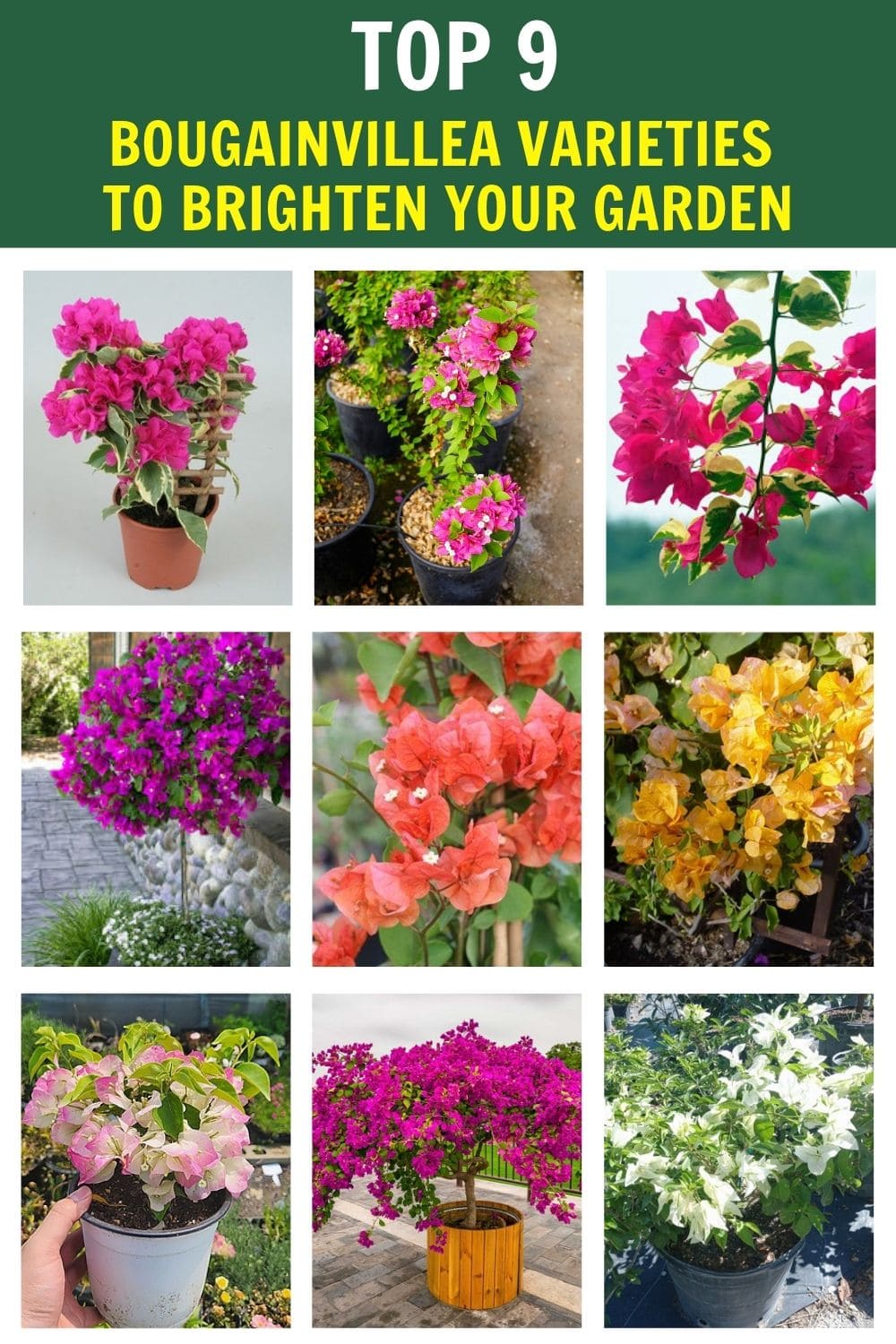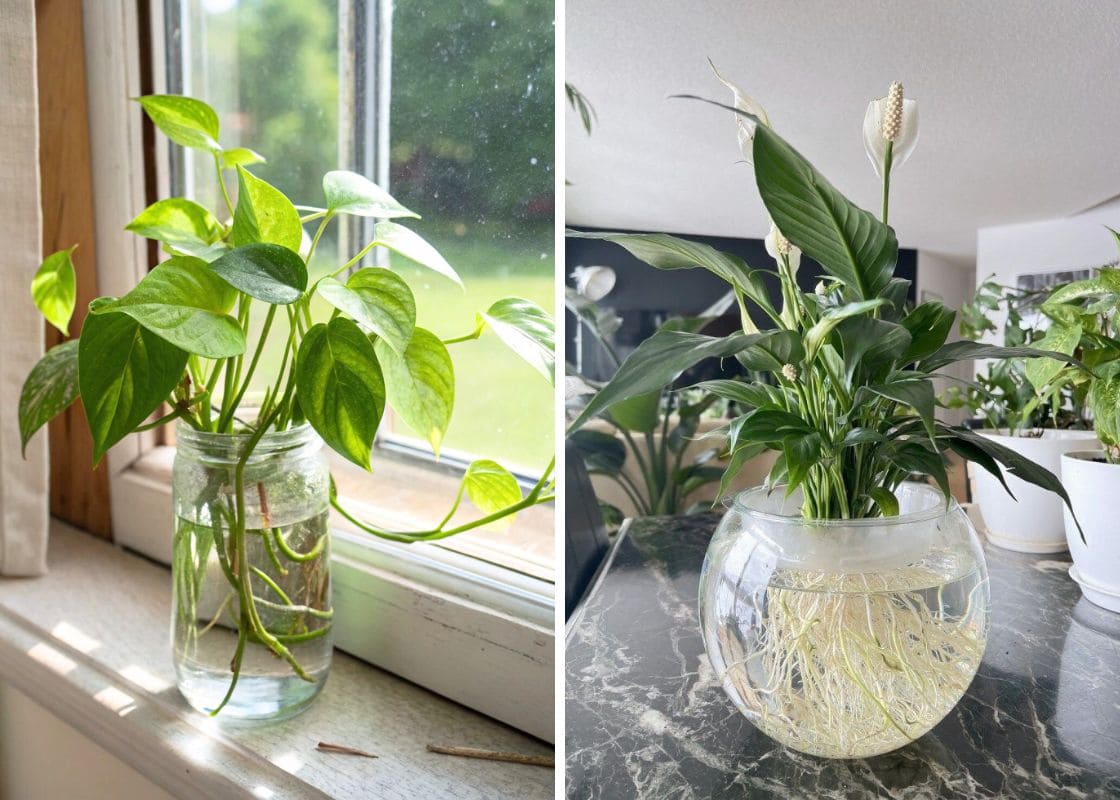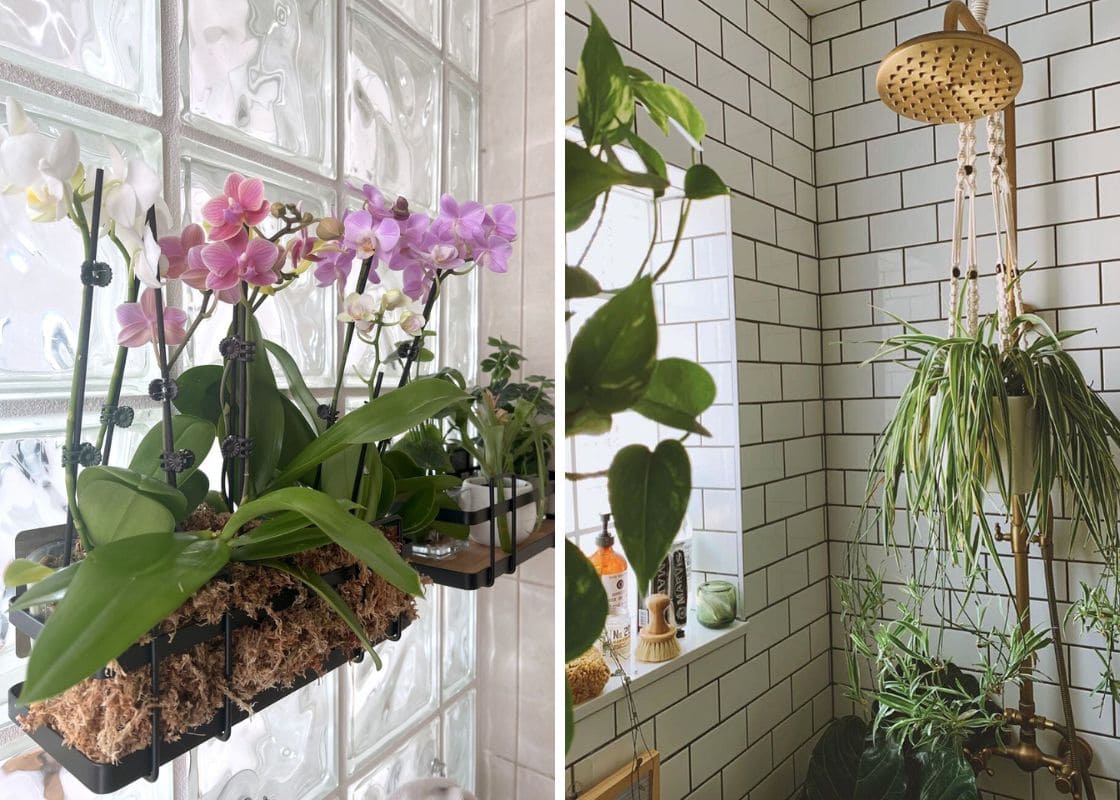Bougainvillea is nature’s confetti cannon as it is unapologetically bold, wildly expressive, and beautifully unpredictable. Once you fall in love with one, you’ll find yourself wanting them in every color.
And the truth is, there’s a Bougainvillea for just about every garden style from sprawling climbers that devour walls to neat dwarf varieties that stay content in a sunny pot.
I’ve grown them through heat waves, drought spells, and forgetful seasons. What I’ve learned is that they reward the brave and the curious. Below are 9 of my favorite varieties, each with its own flair.
1. Bougainvillea Barbara Karst

- Bract color: Bright magenta-red
- Size: Vigorous climber; up to 25-30 ft
- USDA hardiness zone: 9-11
This is the superstar of warm-climate gardens. If you’ve ever admired a neighbor’s vibrant wall of pinkish-red blooms, odds are it was Barbara Karst. It explodes with color once the temperatures rise and doesn’t slow down until cold weather rolls in.
It thrives with minimal attention, but make no mistake, this variety wants space. It climbs fast and hard, so give it a trellis, fence, or arbor to claim.
For extra dense blooms, let it dry slightly between waterings as stress encourages flowering.
2. Bougainvillea Miss Alice (a.k.a. Singapore White)
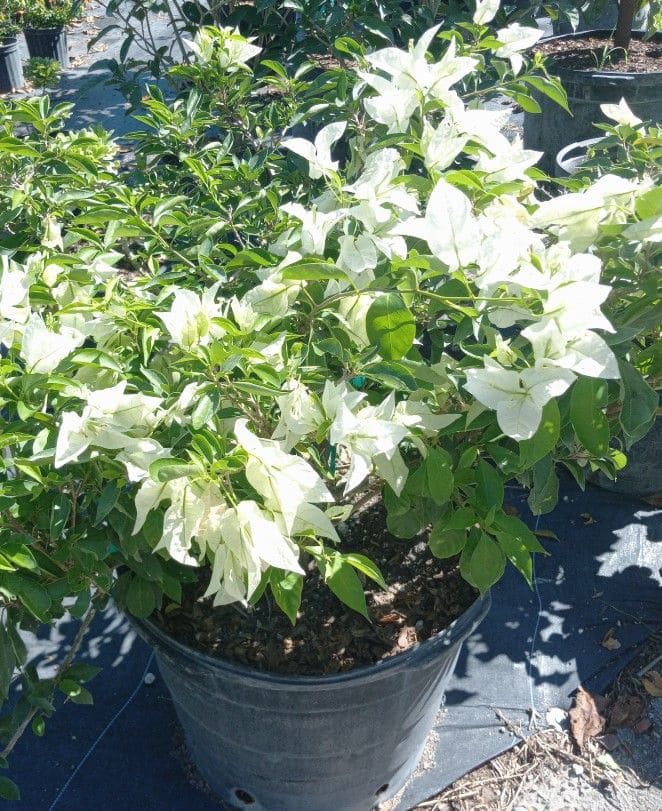
- Bract color: snowy white
- Size: compact; 5-10 ft
- USDA hardiness zone: 10-11
Not every Bougainvillea needs to shout. Miss Alice is elegance in white with clean, calm, and softly luminous vibe.
Unlike others, it’s almost thornless, which makes it perfect near pathways, patios, or children’s play areas.
It’s also one of the few varieties that tolerates partial shade. Though you’ll still get better blooms with full sun, this one adapts. You can also pair it with darker green or red-leaved plants for contrast and let its quiet charm shine.
3. Bougainvillea Orange King
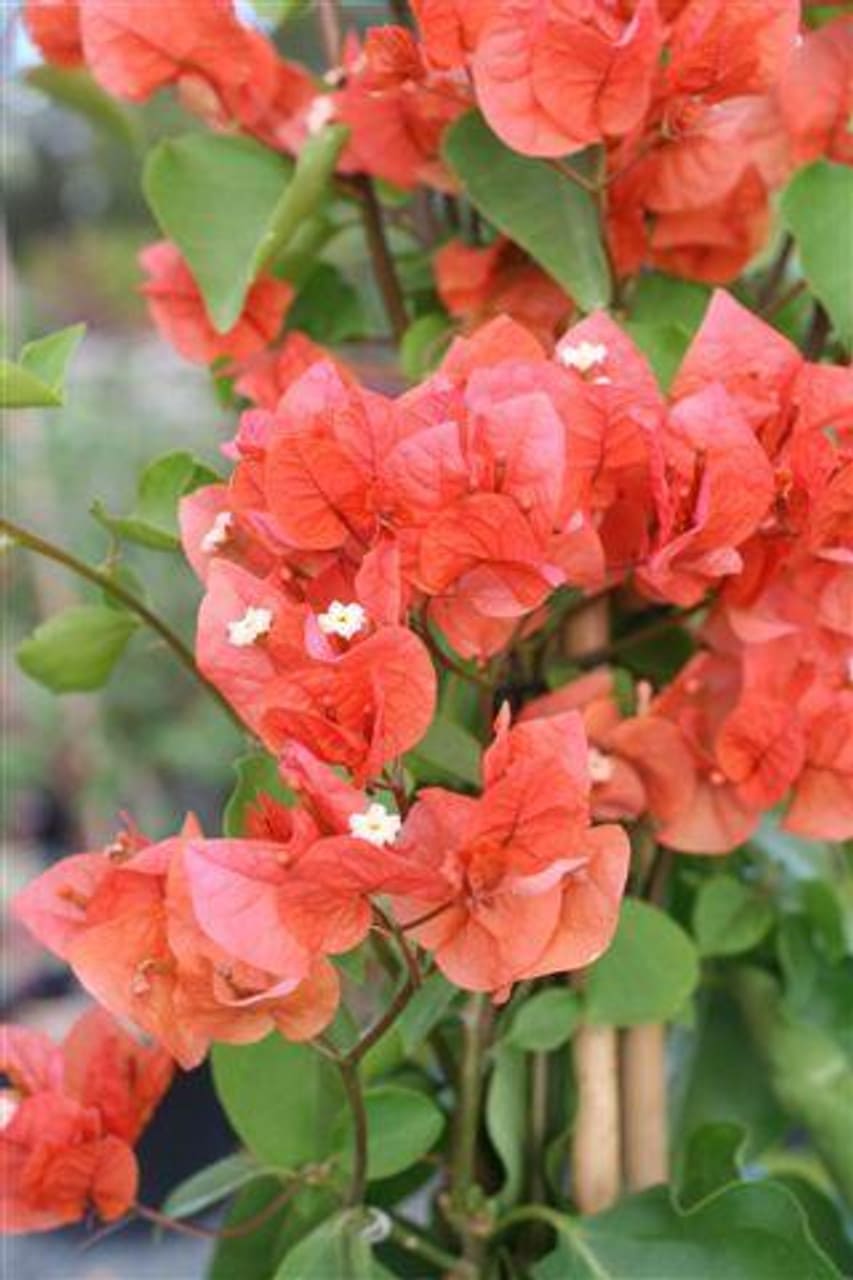
- Bract color: Bold orange fading to coral-pink
- Size: Medium climber; 10-20 ft
- USDA hardiness zone: 9-11
Orange King is all about drama. The warm orange bracts shift into salmon and pink tones as they age, giving your landscape a dynamic color show.
I recommend this one if you’re after a tropical, sunset-hued look.
It loves heat, shrugs off drought, and demands sun. For best results, you prune it after each bloom cycle as Bougainvilleas bloom on new growth. Also, don’t over-fertilize, it prefers a bit of struggle.
4. Bougainvillea Purple Queen (a.k.a. Vera Deep Purple)
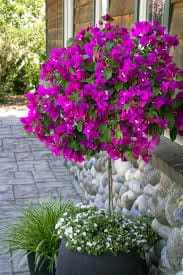
- Bract color: Royal violet-purple
- Size: compact bush; 4-6 ft
- USDA hardiness zone: 9-11
This moody beauty is rich and regal. Purple Queen stays small and manageable, making it a standout for containers or low borders.
It doesn’t sacrifice intensity for size as its bracts are deep and dramatic, often creating a jewel-tone glow in full sun.
I love using this one in symmetrical pots flanking an entryway or lining a sunny patio. Just don’t overwater like most Bougainvilleas, it prefers to dry out between soakings.
5. Bougainvillea California Gold
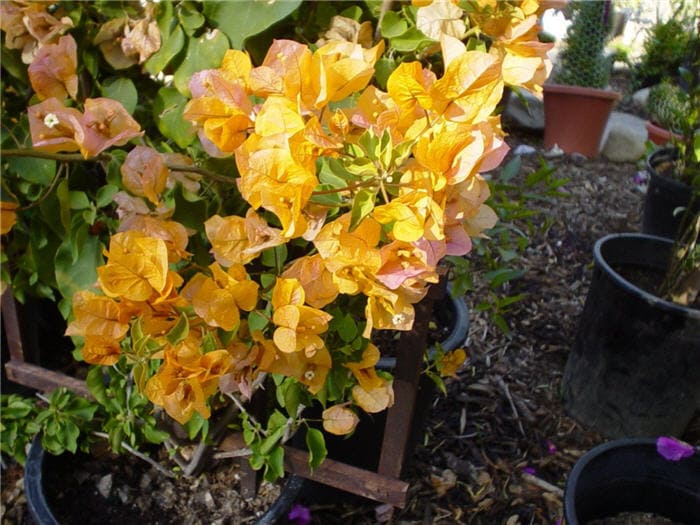
- Bract color: Soft golden yellow
- Size: Tall climber; 15-20 ft
- USDA hardiness zone: 9-11
California Gold adds sunshine even on cloudy days. Its warm yellow bracts pair well with terra cotta, stone, or white stucco walls.
What sets it apart is its slight tolerance to cooler nights, making it a bit more adaptable in zone 9 gardens.
This variety blooms best after a dry spell so resist the urge to pamper it and it’s great for arches or walls where you want warmth without the boldness of red or fuchsia.
6. Bougainvillea Raspberry Ice
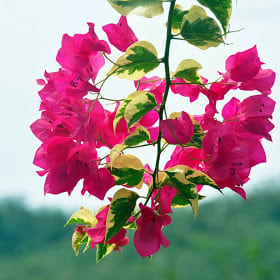
- Bract color: Magenta-pink
- Size: medium climber; 6-12 ft
- USDA hardiness zone: 9-11
This is one of my favorite two-for-one plants. Not only does Raspberry Ice offer vivid pink blooms, but its variegated foliage and creamy-white edged leaves provides beauty even when not in bloom.
It’s a bit more restrained in growth, which makes it a good fit for balcony gardens or low fences.
In winter, the leaves can blush with soft pink tones too. Just note: variegated types are slower-growing and may need a little extra sun to bloom fully.
7. Bougainvillea Double Delight
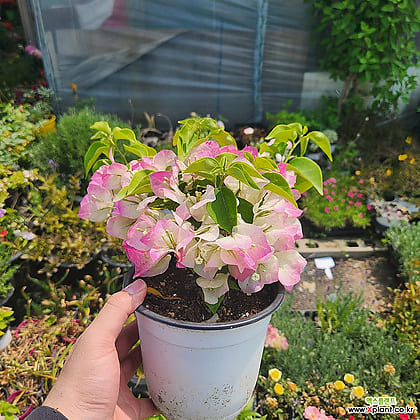
- Bract color: Rose or magenta with double layers
- Size: moderate; 6-15 ft
- USDA hardiness zone: 9-11
Think of this one as the peony of Bougainvilleas. Instead of the usual paper-thin bracts, Double Delight produces lush, ruffled clusters that almost mimic real petals. This makes it great for formal gardens or high-impact focal points.
You can train it to climb, or prune it into a more shrubby shape. It blooms in waves, so a light trim after each flush will keep the show going.
8. Bougainvillea Torch Glow
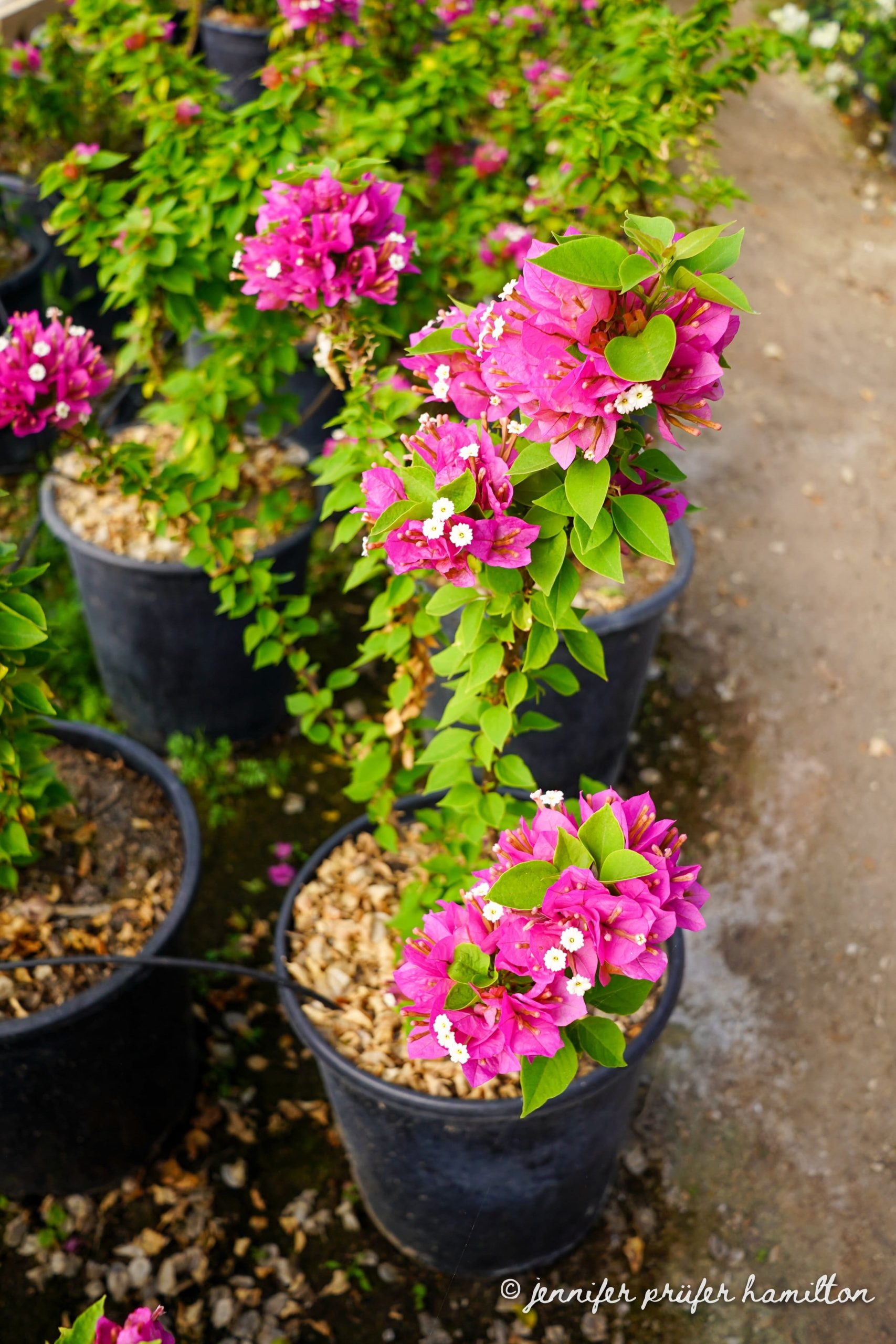
- Bract color: Rose-pink
- Size: Upright, compact; 4-6 ft
- USDA hardiness zone: 9-11
This is one of the most unique forms, it doesn’t sprawl like others. Torch Glow grows upright, with thick stems and bracts held in torch-like clusters. I use this one as a statement plant in containers or borders where space is tight.
Its form is more vertical than trailing, so it can even be used in topiary-style plantings. Bonus, it attracts hummingbirds like a magnet in summer.
9. Bougainvillea Variegata
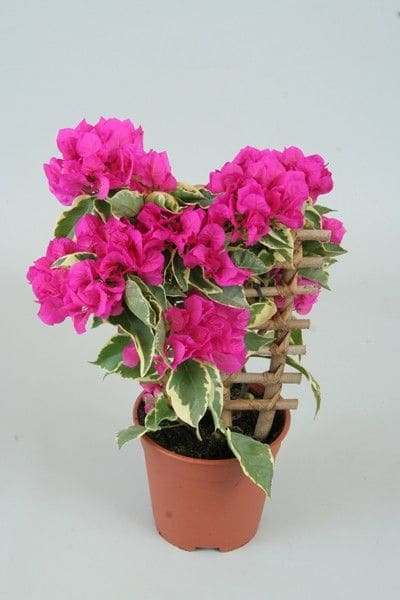
- Bract color: Usually magenta-pink
- Size: moderate climber; 10-15 ft
- USDA hardiness zone: 9-11
Variegata is for those who want beauty year-round, not just when the plant’s in flower. Its green-and-white marbled foliage gives texture and brightness to garden corners, and the classic pink bracts pop against the pale leaves.
This one needs a bit more sun to flower well, but even when it’s between bloom cycles, it still earns its keep. It’s also fantastic for lightening up dark corners or pairing with deep-toned foliage plants.
Final Tips From the Garden
If you want your bougainvillea to bloom like it’s in the tropics, pruning regularly is essential. These beauties flower on new growth, so a light trim after each blooming cycle encourages even more vibrant bracts.
One of the most common mistakes I see is overwatering. Bougainvilleas are Mediterranean at heart. They thrive on sunshine and struggle. Soggy roots or overly rich soil will give you a leafy bush and barely any blooms.
Besides, sunlight is non-negotiable. Bougainvilleas demand at least six to eight hours of direct sun daily. Any less, and you’ll notice slower growth and fewer bracts.
If you’re working with a shadier garden, go for lighter-colored varieties like Miss Alice or a variegated type that offers foliage interest even when the blooms are shy.
For gardeners in colder climates, don’t give up. You can still enjoy these tropical climbers in pots. Just remember to bring them indoors before temperatures dip below 40°F. They’ll go a bit dormant, but with patience and spring sun, they bounce back.
